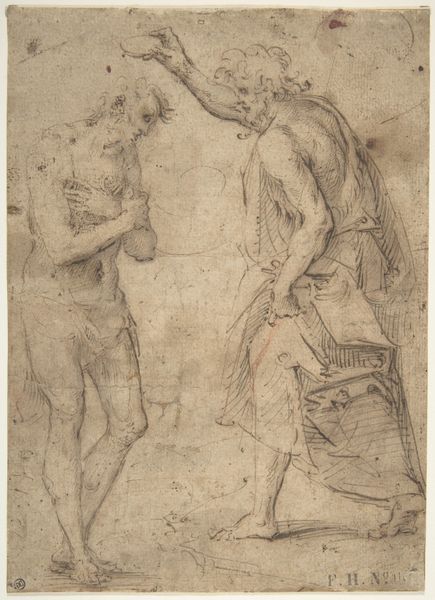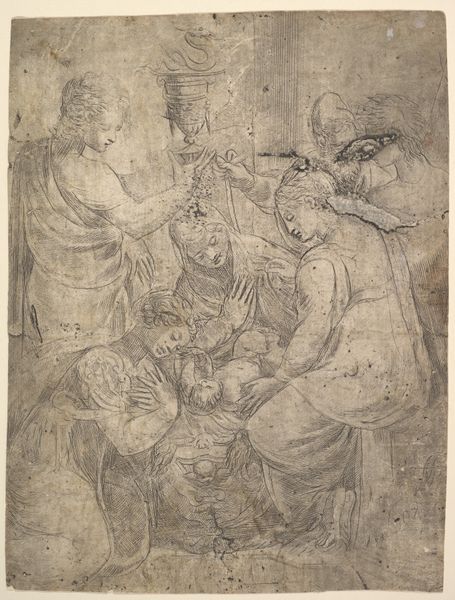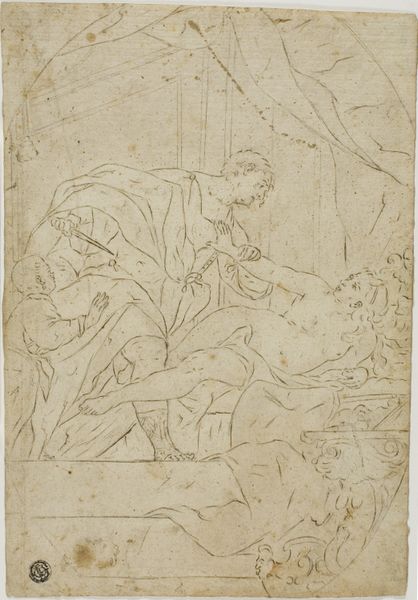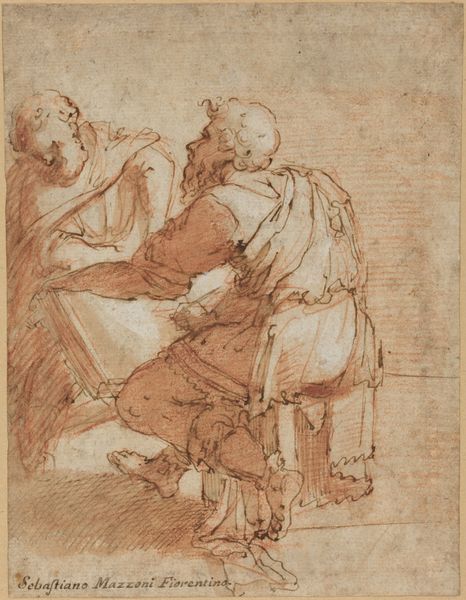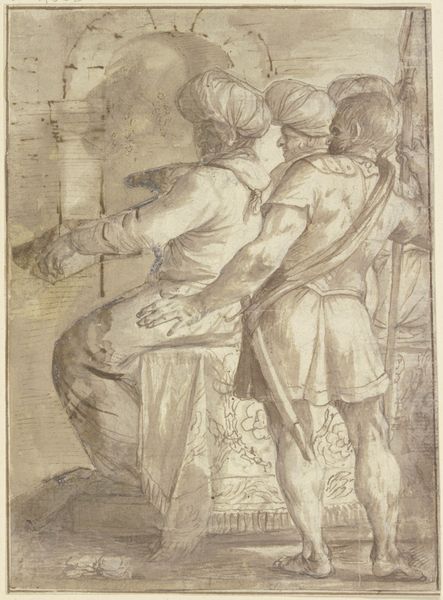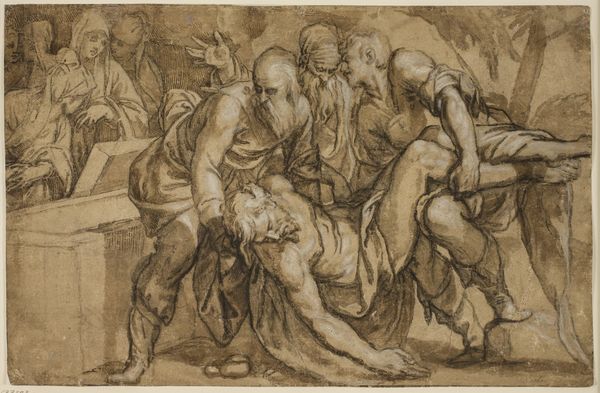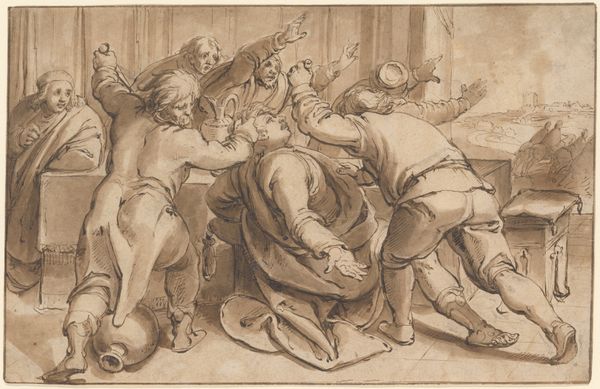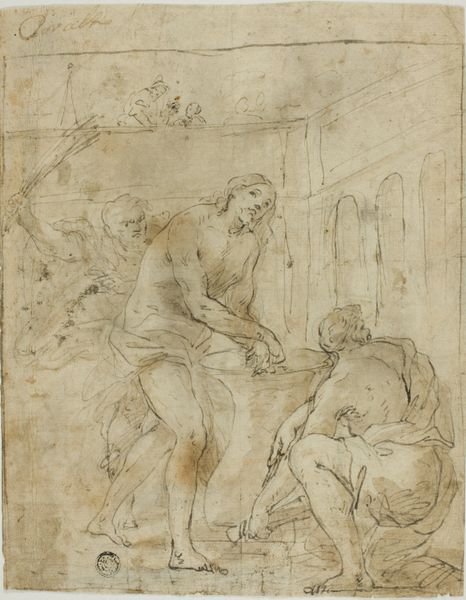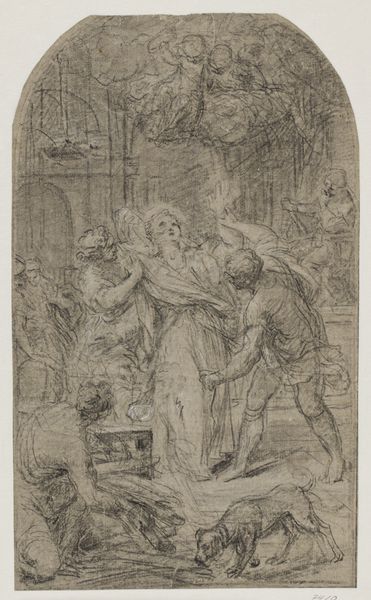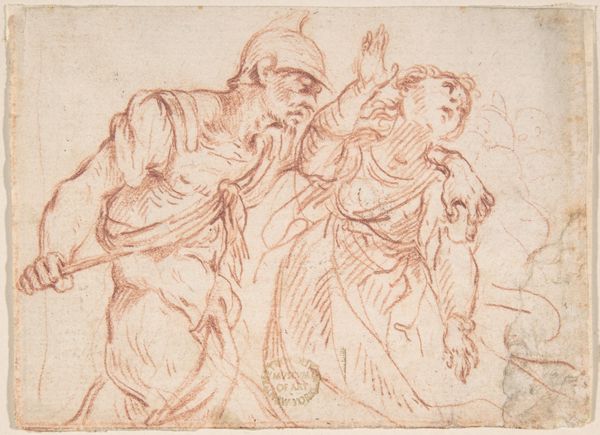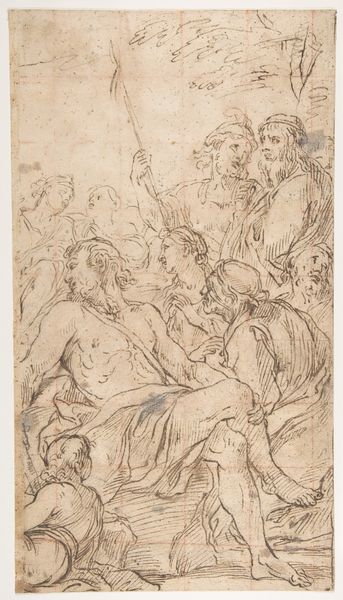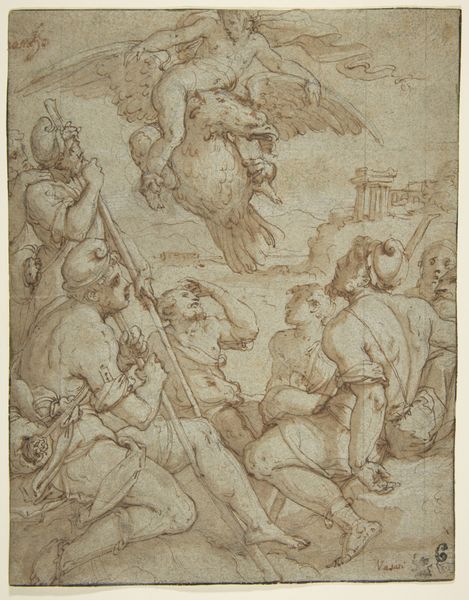
The return of the prodigal son who falls at his father's feet 1531 - 1541
0:00
0:00
drawing, print, etching
#
drawing
#
narrative-art
# print
#
etching
#
pencil sketch
#
figuration
#
11_renaissance
#
history-painting
#
italian-renaissance
Dimensions: sheet: 5 1/2 x 3 9/16 in. (14 x 9 cm)
Copyright: Public Domain
Curator: Andrea Schiavone's etching, "The Return of the Prodigal Son Who Falls at His Father's Feet," likely created between 1531 and 1541, is currently held at the Metropolitan Museum of Art. It's a poignant interpretation of the biblical story. Editor: My initial response is one of almost unbearable tenderness. The fragility of the line work, combined with the raw emotion in the figures' gestures, speaks volumes. Curator: Observe how Schiavone utilizes the etching technique to create a sense of depth and texture. The density of lines in certain areas provides a clear contrast, highlighting the key figures and narrative moments. It also obscures parts in a pleasing chiaroscuro that would make the likes of Caravaggio green with envy. Editor: The prodigal son, kneeling, embodies humility, while the father’s embrace suggests unconditional love, themes universally resonant and reinforced by similar iconography across cultures and centuries. That said, why an ambiguous architectural construction behind them? Does it represent the son’s misspent life, which fell into such disrepair, or simply a way to compress the picture plane to increase the visual tension? Curator: Its structural ambiguity provides the figures with space, literally and figuratively, to communicate this critical scene of repentance. However, structurally, the image is quite stable, due in part to its pyramidal construction: the father’s head and shoulders function as a compositional keystone which both directs the viewer’s eyes to important details and gives the image greater stability. Editor: Agreed, the use of the pyramidal formation is no accident; it evokes the divine and unbreakable structure of the Holy Trinity! It reinforces the spiritual lesson. I also cannot look away from the supporting figures' downcast gazes. They almost seem ashamed, perhaps suggesting the son's transgression had broad and harmful impacts on his family or community. Curator: From a formalist perspective, their gestures of support or pity balance out the central embrace and bring closure to this image’s micro-narrative of reconciliation. Editor: This piece serves as a potent visual reminder of redemption and the enduring strength of familial bonds. It transcends its religious origins to tap into something universally human. Curator: A demonstration of how composition and technique can shape narrative power and move the spectator. A Renaissance triumph.
Comments
No comments
Be the first to comment and join the conversation on the ultimate creative platform.
